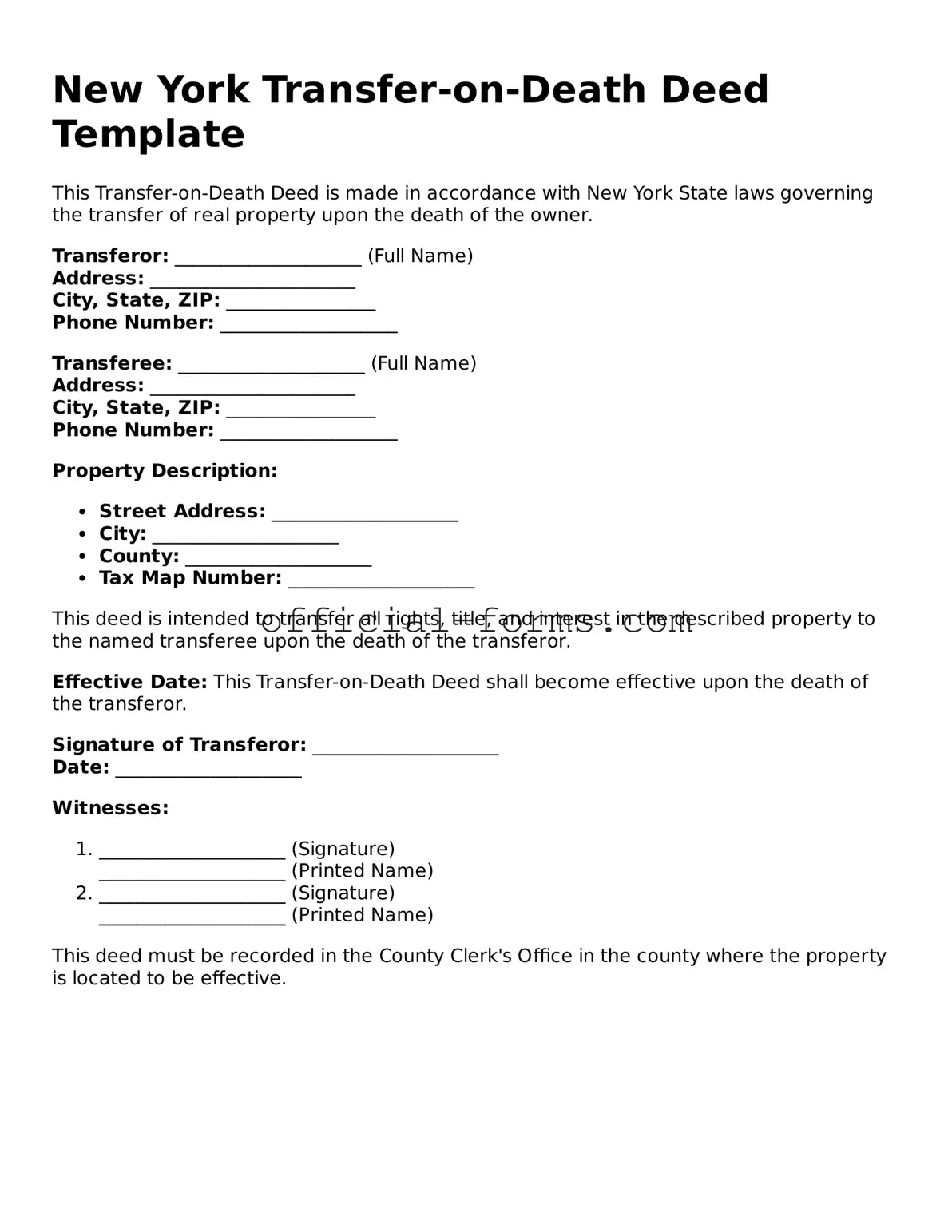Official New York Transfer-on-Death Deed Document
The New York Transfer-on-Death Deed form allows property owners to transfer their real estate to beneficiaries upon their death without going through probate. This straightforward legal tool provides an efficient way to manage property inheritance. Understanding how to properly complete and file this form is essential for ensuring a smooth transition of ownership.
Open My Transfer-on-Death Deed Now
